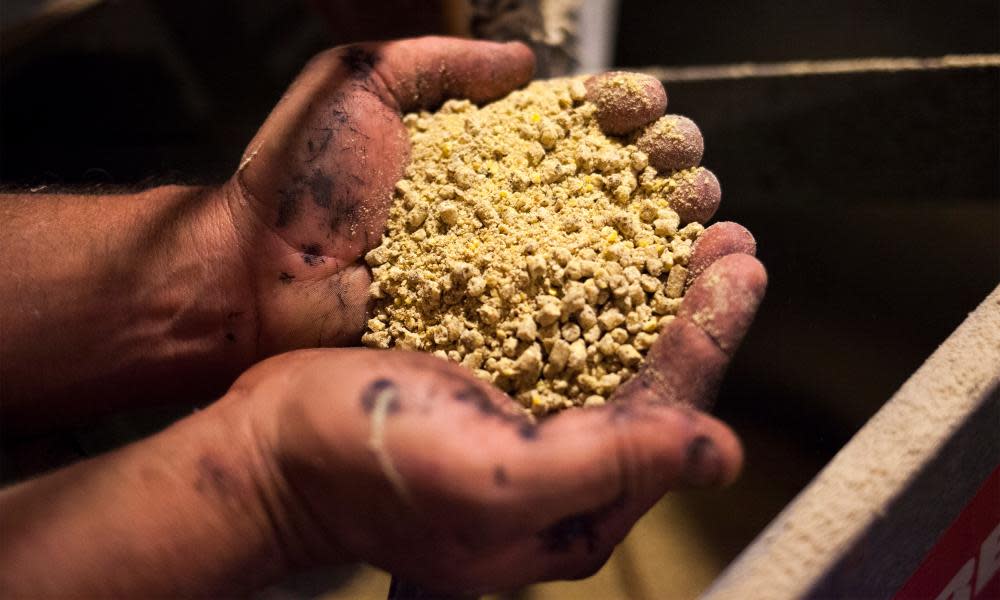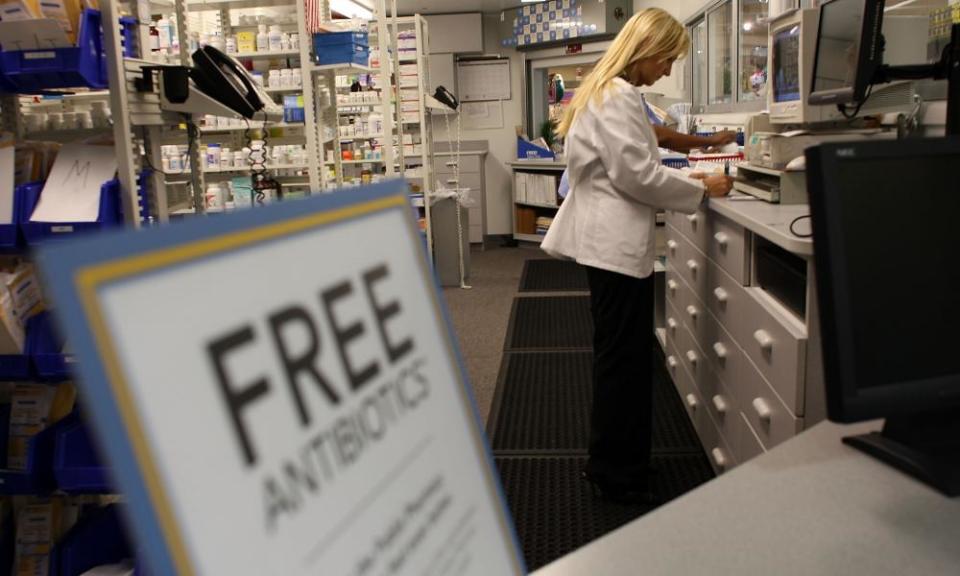How much does big pharma make from animal antibiotics?

How much money do pharmaceutical companies earn from animal antibiotics?
Pharmaceutical companies are earning about $5bn (£3.77bn) a year from producing antibiotics for farm animals, according to calculations by Animal Pharm, the agricultural business analysts. The European animal antibiotics market is worth about $1.25bn a year, and the US animal antibiotics industry about $2bn a year.
With the global antibiotics market worth about $45bn, this represents a small but significant revenue source for the big pharmaceutical companies, particularly those which focus on this area.
In the US more than 70% of antibiotics are used on farms. In China the figure is approximately 52%. But the drugs are worth a far smaller percentage of the market in financial terms because, despite being essentially the same antibiotics, they are sold for far smaller amounts of money.
When are these antibiotics used and what is the effect?
Antibiotics are widely used in beef, pork and chicken production, but there are concerns that repeated use of antibiotics can increase resistance in bacteria, making vital antibiotics less effective against serious illnesses in humans.
There is international pressure on governments, medical professionals and drug companies to reduce the use of antibiotics. Despite the campaigns, pharmaceutical companies continue to lobby against stricter regulation of antimicrobials, which have a wide range of uses.
Some feel that pharmaceutical companies are keen to avoid further regulation. According to Richard Young, policy director of the Sustainable Food Trust: “Once they’ve got an antibiotic, they’ve got a duty to their shareholders to make as much money as possible from it. This is a very sophisticated industry, with a long history of lobbying. The problem is that so much of the data used by the regulators is generated by scientists connected to the drug companies.”
Joseph Harvey, editor of Animal Pharm, said: “It is overuse of antibiotics in some species and countries that is causing particular concern, particularly in Asia, Latin America, and Southern Africa.
“Bacteria in humans and food animals continue to show resistance to the most widely used antimicrobials. For example, resistance to ciprofloxacin is very high in campylobacter, which causes severe foodborne infections, and this reduces the effectiveness of treatment. Multi-drug resistant salmonella bacteria also continue to spread across Europe and this has serious implications for public health.”
Are they an important part of the pharmaceutical market?
An analysis of company reports shows that pharmaceutical companies make large sums from certain antimicrobials. In 2016, Zoetis, which is the world’s largest producer of medicine and vaccinations for pets and livestock, made 7% of its revenue from its ceftiofur antibiotic range.

In 2016, Zoetis’s revenues were $4.8bn, which means the ceftiofur line brought in around $340m. Zoetis was originally part of the pharmaceutical company Pfizer.
In 2012, the US Food and Drug Administration warned that due to its strength and misuse on farms ceftiofur could pose a “high public health risk”, partly because the drug belongs to a class of antibiotics considered critically important in human medicine.
Why are human antibiotics more expensive?
Although the human antibiotic market is smaller in bulk quantities sold, its value is higher than that for animals.
Dr Gail Hansen, public health veterinarian and antibiotic resistance expert, explains that this is because it is more expensive to produce medicines for humans rather than animals.
“The basic penicillins and tetracyclines are very cheap drugs for both humans and animals but they are cheaper for animals, just because with animalsthey don’t need to be presented in blister packs and so on.”
The cost of animal antibiotics was lower simply because they were often given to animals destined for the cheaper end of the food market.
Hansen said that as a result, she had heard of people accessing animal antibiotics for human use.
“Anecdotally, I have heard that in the United States, people with access to animal medicines – farmers, ranchers, animal health workers - know that they can either pay pennies for the animal drug or $5 for the human equivalent. I don’t think it happens much, but I think it does happen.”

 Yahoo News
Yahoo News 